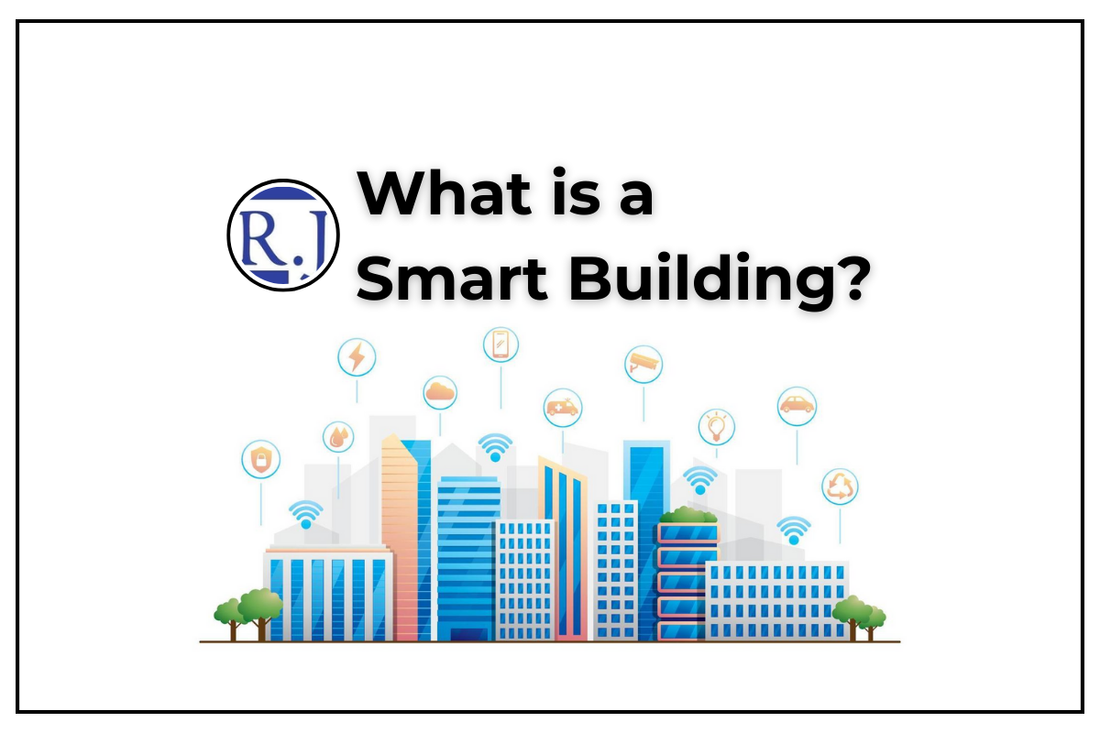
What is a Smart Building
Share
What is a Smart Building?
Smart buildings, or intelligent buildings, are structures that utilize an integrated network system to manage other building-wide infrastructures like lighting, heating, ventilation, and security. By combining data analytics and automation processes, a smart building is able to optimize the operations of a building with ease.
Key Components of a Smart Building
These modern structures require an elaborate system of advanced technology and operations to function.
- Power over Ethernet (PoE) – PoE is an essential foundational technology for smart buildings to operate. With PoE, connecting, powering and managing infrastructures like HVAC is a lot easier; including other benefits like greater flexibility in how you want your building to function and reduced costs.
-
Internet of Things (IoT) devices – To monitor, track, and execute the appropriate optimization changes, IoT devices are used. These devices are able to communicate and process information through the Internet and can include a variety of sensors and software. Some of the more common IoT devices include:
- Thermostats
- HVAC sensors
- Occupancy sensors
- Building Management System – Used to manage and monitor the various electrical and mechanical systems in the building. The system is able to collect data and apply correctional actions after being verified by the building managers.
- HVAC, Lighting, Security, Energy, and Water Systems – Standard infrastructure in any building, but includes compatibility and connectivity to be used in a network setting.
- Artificial Intelligence – AI can increase the speed of automation and make predictive decisions based on the user's preference
The Benefits of a Smart Building
Smart buildings aim to improve the overall efficiency and sustainability of its operations while also ensuring maximum comfort among its occupants.
- Energy Efficiency – Smart buildings are able to reduce their energy consumption by up to 30-50% using the various HVAC, lighting, and energy management systems.
- Cost Savings – With various sensor networks that can detect occupancy levels, climate changes, and more, every smart building is able to optimize their functions to the appropriate levels. This greatly helps with reducing cost by preventing excessive waste of energy.
- Improved Experience – The most common improvement in experience for occupants, is the adaptive climate to ensure maximum comfort. Residents are able to personalized the controls to their wants, and the rest of the network will handle the rest.
- Scalability – The advent of AI and more advanced technology allows automation processes to scale accordingly. Additionally, integrating new systems and infrastructures remains viable because of PoE and is only limited by the physical constructs themselves.
- Connectivity – With technology like PoE and BMS, all aspects of devices are connected onto a singular network. This ensures the fastest and most reliable response time for the building operation.
- Sustainability – With the usage and integration of renewable energy sources (e.g. solar panels and smart grids), smart buildings are able to reduce their carbon footprints.
- Safety & Security – Smart buildings can integrate a cohesive security system through the usage of devices like IP cameras and access control systems.
Are Smart Buildings Susceptible to Security Risks?
Cybersecurity attacks are a potential security risk for smart buildings. Typically, building infrastructures like HVAC systems are not vulnerable to malicious manipulation. But smart buildings operate a large portion of its control systems on a network, leaving room for unwanted tampering.
There are naturally mitigations and security features that will prevent this risk. For basic function devices such as motion sensors, they are usually free from risk due to them not being connected to the building network. Other devices, such as climate control systems or alarms, are more susceptible. Through usage of various cybersecurity programs, building managers can minimize the breaches. Some of the mitigation strategies involve:
- Security Protocols – Having a set protocol in place will allow personnel to quickly respond to any foreign threats. These protocols will also ensure the appropriate measures are taken when dealing with various situations.
- Firewalls – Firewalls are a great way to hinder attacks by segmenting the network and serving as a line of defense.
- Authentication – Having an authentication process will ensure that only the verified devices are able to use and connect to the network. This will make sure sensitive data is protected and unwanted devices are unable to affect the network.
- Physical Security – Although a little counter intuitive, physical security can make sure critical functions are not easily accessible by saboteurs.
Cost and Investments of Smart Buildings
As newer technology continues to develop, integrating them into our daily lives is simple. For smart buildings, it’s no different. Traditionally, the core functions of a building like HVAC, lighting, and security are some of the first systems to be revamped and improved upon in our smart buildings. Other functions such as air quality sensors, occupancy sensors, and water recycling systems are another great addition to any intelligent buildings. But how much would they cost?
There are several aspects to consider when deciding to build a smart building or home.
- Are you upgrading an existing building? Or are you constructing a brand new property?
- The size of the building you will be working on?
- What is the cost of electricity in your area?
- What are the industry and municipal regulations that you will have to follow?
- What type of IoT devices and PoE technology are you considering to add?
The short answer is that smart buildings are not cheap. Integrating an expansive list of technology and various components into a building is an expensive undertaking. However, the immediate benefits and returns in the long-term are well worth it. Having a smart building will help you cut down on waste and greatly increase the cost-effectiveness of systems such as heating. Additionally, with the various sensors, building managers are able to monitor insights and plan eco-friendly initiatives for their buildings.
The Future of Smart Buildings
This emerging industry is already a multi-billion dollar one. Essential management systems in smart buildings are estimated to dramatically increase by the end of the decade with a CAGR of 28.0%.
Future applications of technology like artificial intelligence will only make automation and predictive adjustments more sound and effective. Other technology like digital twins will also enable easier planning and routing of all connections within a smart building. Smart buildings are also not limited to residential purposes. They could be integrated into essential infrastructures like hospitals and factories, increasing their safety and data collection.








